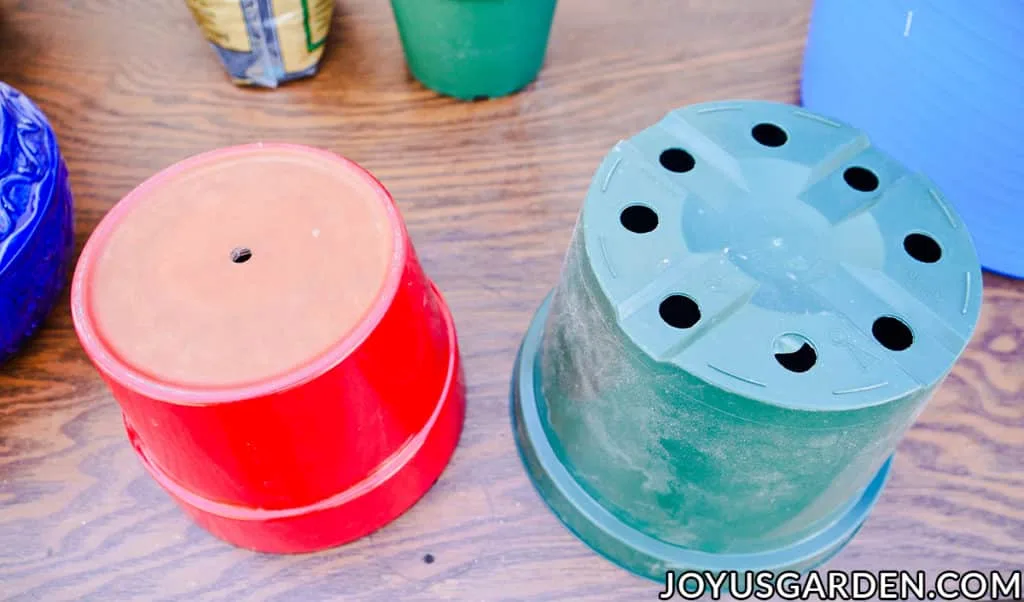Repotting Sansevieria Hahnii (Bird’s Nest Snake Plant)
One Sansevieria just isn’t enough. I have quite a few Snake Plants, not only because I love their look, but they’re about as easy-care as you can imagine. This is all about Sansevieria Hahnii repotting including the steps you should take, the mix to use and things good to know.
I’ve done a post and video on repotting Snake Plants. I wanted to do this 1 specifically on repotting Bird’s Nest Sansevierias because they’re very popular. There’s a spot in my living room which is lower light so I’d been looking for a small plant and found this Sansevieria Hahnii Jade.
The Jade Bird’s Nest is a dark solid green and does better in lower light than those Snake Plants with bright variegation. I love its rosette form and thought it would look fabulous in a small red ceramic pot I had hanging around in the garage just begging for a plant companion.
HEAD’S UP: I’ve done this general guide to repotting plants geared for beginning gardeners which you’ll find helpful.
Some Of Our General Houseplant Guides For Your Reference:
- Guide To Watering Indoor Plants
- 3 Ways To Successfully Fertilize Indoor Plants
- How to Clean Houseplants
- Winter Houseplant Care Guide
- Plant Humidity: How I Increase Humidity For Houseplants
- Buying Houseplants: 14 Tips For Indoor Gardening Newbies
- 11 Pet-Friendly Houseplants
You can see the repotting go down at my work table:
When Should You Repot Sansevieria Hahnii?
Spring and summer are the best time to repot a Sansevieria hahnii. If you live in a climate with more temperate winters, then into early fall is fine. Houseplants like to rest in the winter months so I leave mine be.
I repotted this 1 in early April. I’m on a repotting spree this spring so this Bird’s Nest is 1 of many plants on the list.

How Often Should You Repot Sansevieria Hahnii?
Snake Plants don’t mine being tight in their pots. They actually seem to do better if a bit pot bound. I’ve seen quite a few which have actually broken their grow pots & look just fine.
I have a couple of Snake Plants which I haven’t repotted for over 5 years. That’ll be the case with this Jade Bird’s Nest because the root ball is quite small & it has plenty of room to grow in it’s new pot. Don’t rush to repot yours unless it’s looking stressed or it’s cracked the grow pot.

Materials Used
Snake Plants aren’t too fussy as to their soil mix but it does need to have excellent drainage & be well aerated.
Potting soil. My favorite potting soils are made by the same company. I use them interchangeably or sometimes mix them. Online sources: Ocean Forest & Happy Frog.
Succulent & cactus mix. I make my own DIY succulent and cactus mix. Because I have a lot of succulents, there’s always a batch of it mixed up & ready to go. Here are a couple of options of mixes that you can buy: this is a good one as well as this more economical option.
I also used: clay pebbles, charcoal, worm compost & compost. These are optional. More on how I feed my houseplants with compost & worm compost here.
Note: The clay pebbles & charcoal were used because of the 1 drain hole issue. You can skip this if your pot has adequate drain holes. The charcoal not only helps to improve the drainage, but it absorbs impurities & odors. This a big plus because the plant is directly planted in the ceramic.
I use worm compost & compost for all my repotting & planting projects. It’s a great way to naturally & slowly nourish your plants.

Steps to Repotting Sansevieria Hahnii
I watered the plant 5 days before repotting it. You don’t want to repot or transplant a plant that is dry and stressed.
I pressed on the grow pot to get the plant out of the grow pot. It came out easily & ended up having a small root ball.
Because I was directly planting this into the ceramic, I put about a 1/2″ layer of pebbles in the bottom. I sprinkled a layer of charcoal over that. (Skip this step if you have a pot with adequate drain holes).
I filled the pot with enough soil mix – in the ratio of 1/2 potting soil to 1/2 succulent & cactus mix – so the crown of the plant would be at the top of the grow pot. Snake Plants like to stay on the dry side so you don’t want the crown to sink too far down.
I sprinkled in a handful or 2 of compost & added more mix around the sides. I gently pressed down on the mix to make sure the plant was standing straight.
I topped it off with more mix & a light layer (1/4″) of worm compost.

Care After Repotting
I moved it to the living room & will let it settle in. It’ll be about 10 days before I water it because the root ball was very moist & the spot it’s in is lower light. Snake Plants easily root out & are subject to overwatering.
Because of the 1 drain hole & the lower light conditions, I plan on watering this plant once a month. In the winter it might be every 2 months. I’ll just have to see how fast it’s drying out!
Can we ever have too many Snake Plants? Never! The Bird’s Nest Sansevierias only get 10″ high and grow in a rosette form. They come in a variety of leaf colors and variegations so you’ll surely find 1 to love.
Happy gardening,

Learn more about snake plants!

This post may contain affiliate links, you can read our policies here.





